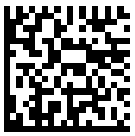Nowadays, in the majority of countries, a wide variety of sports programs are shown on television which have significant consequences on live sports contests. There are both advantages and disadvantages to this issue.
There are definite benefits to broadcasting more sports programs on television. T...
Check your IELTS writing task 1 and essay, this is a free correction and evaluation service.
Check IELTS Writing it's free


IELTS Writing Answer Sheet
Candidate Name:
milad yazdi
Center Number:
1
2
3
4
Candidate Number:
2
2
5
6
6
Module (shade one box):
Academic:
General Training:
Test Date:
3
D1
D1
M2
M2
Y0
Y2
Y1
YThe chart below shows the number of men and women (in thousand) in further education in Britain in three periods and whether they were studying full-time or part-time.
The chart below shows the number of men and women (in thousand) in further education in Britain in three periods and whether they were studying full-time or part-time. RW5LQ
The vertical bar graph illustrates information about the men and women who participated in further education for three periods in the United Kingdom and demonstrates that they were studying full-time or part-time.
Overall, it is readily apparent that in terms of men, the higher rate was observed in 1970/71 for part-time education, whereas the least noticed for full-time in the same year. Moreover, the maximum number of women seen experiencing part-time teaching in 1990/91, whereas the minimum caught in full-time schooling in 1970/71.
According to the chart, 1000 men experienced part-time schooling in 1970 and 1971, while solely 140 males participated in full-time education. In addition, 815 and 825 gentlemen took part in temporary teaching in 1980/81 and 1990/91, respectively. However, between 150 and 205 guys became interested in full-time training, respectively, in the middle of 1980 and 1990.
Furthermore, with regards to data provided for women, more than 1000 females were interested in occasional teaching in 1990/91, while 200 were curious about permanent schooling. Additionally, in 1970/71, about 700 gentlewomen accepted positions in part-time education. Surprisingly, only 50 were nosy in full-time training for the same year. Finally, in 1980/81, 795 women obtained a role of temporary education, whereas nearly 190 were able to receive a place of permanent teaching.
The vertical bar graph illustrates information about the
men
and women
who participated in further
education
for three periods in the United Kingdom and demonstrates that they were studying full-time or part-time.
Overall
, it is readily
apparent that in terms of men
, the higher rate was observed
in 1970/71 for part-time education
, whereas the least noticed for full-time in the same year. Moreover
, the maximum number of women
seen
experiencing part-time teaching
in 1990/91, whereas the minimum caught in full-time schooling in 1970/71.
According to the chart, 1000 men
experienced part-time schooling in 1970 and 1971, while solely
140 males participated in full-time education
. In addition
, 815 and 825 gentlemen took part
in temporary teaching
in 1980/81 and 1990/91, respectively
. However
, between 150 and 205 guys became interested in full-time training, respectively
, in the middle of 1980 and 1990.
Furthermore
, with regards to
data provided for women
, more than 1000 females were interested
in occasional teaching
in 1990/91, while 200 were curious about permanent schooling. Additionally
, in 1970/71, about 700 gentlewomen accepted
positions in part-time education
. Surprisingly
, only
50 were nosy in full-time training for the same year. Finally
, in 1980/81, 795 women
obtained a role of temporary education
, whereas nearly
190 were able to receive a place of permanent teaching
. Do not write below this line
Official use only
CC
7.0
LR
5.5
GR
6.5
TA
6.5
OVERALL BAND SCORE
6.5


IELTS academic The chart below shows the number of men and women (in thousand) in further education in Britain in three periods and whether they were studying full-time or part-time.
👍 High Quality Evaluation | Correction made by newly developed AI |
✅ Check your Writing | Paste/write text, get result |
⭐ Writing Ideas | Free for everyone |
⚡ Comprehensive report | Analysis of your text |
⌛ Instant feedback | Get report in less than a second |
women
education
education
women
teaching
education
teaching
with regards to
women
teaching
accepted
education
women
education
teaching
Copy promo code:RdWZ2
CopyRecent posts
- The amount of sport shown on television every week has increased significantly and this is having an impact on live sports events. Do you think the benefits of having more televised sport are greater than the disadvantages?
- Nowadays, some employers think that formal academic qualifications are more important than life experience or personal qualities when they look for new employees. Why is it the case? Is it a positive or negative development?Nowadays, A University education is essential for getting a well-paying job. Some recruiters believe that high-level education is considered as a first priority as compared to job experience and personal behavior when selecting a position in a company. While this has several benefits I strongly beli...
- The table below shows CO2 emissions for different forms of transport in the European Union. The Pie Chart shows the percentage of European Union funds being spent on different forms of transport.The assigned bar chart illustrates information about the CO2 gas which is spread by different modes of transportation in the European Union, while the pie chart indicates the wealth that is being spent on those transports. At a fleeting glance, it is immensely clear that the maximum amount of pollu...
- The figure shows the results of a survey of 1000 adolescents in five different countries. The participants were asked at what age they believed certain rights and responsibilities should be granted to young people.The bar chart illustrate the outcomes of a survey of 1000 teenagers in five distinct nations around the world in which they were asked about the most appropriate age for three key rights and responsibilities to be given to the youngsters. Overall, adolescents surveyed have different views on the ri...
- Climate change is a big environmental problem that has become critical in last couple of decades. Some people claim that humans should stop burning fossil fuels and use only alternative energy resources, such as wind and solar power. Others say that oil, gas and coal are essential for many industries, and not using them will lead to economic collapse. What is your opinion? Support your point of view with relevant examples.Today, climate change is becoming one of the global challenges in the world. Climate change in nature, the level of water pollution, the depletion of land energy resources for future generations are clear examples of this. It should be noted that in today's 21st century, the development of technolo...
- Commenting on the significance of the meal and the painting of Dolores at the end of the story and discussing Dolores’s reaction to St. Luke’s story of Christ in the house of Martha and Mary.Dolores is a servant who is complaining about her position. She is a young woman and enthusiastic for living a life to the fullest. However, she is angry because she is never appreciated by the people for what she has done all the time: the meal. The meal is the result of a procreation process. By u...
- The chorus in the play The Love of The NightingaleThe chorus is spokesman of the society, it reflects the voice of the people. In the play The Love of The Nightingale, the male choruses, function as a recorder although they know what is going to happen. In the scene six the male chorus directly states their passivity and functioning as recorders. F...
- There are more new towns being built nowadays. It is more important to include public parks and sports facilities than shopping centres for individuals to spend their free time.In this day and age the construction of new buildings is raised more than ever in a past time. Some people believe that the public gardens and sports arena are better option for persons to spend their leisure time. I agree with this to a larger extent, as according to me, It become more likelihood b...
- Some people feel that it is always wrong to keep animals in captivity, for instance zoos. Other people say that there are benefits for the animals and for humans. Discuss both sides and give your own opinionSome people suppose that wild animals should be free and not in a cage in a zoo, whilst others think that zoos are beneficial for both humans and animals. Personally, I believe that both options have their advantages. Keeping animals in zoo have more benefits for them. Firstly, zookeepers provide he...
- Some people claim that museums and art galleries are not needed today, because everyone can see historical objects or art works by computer.In the modern era, with the development of technology in three-dimensions printing, some people believe the historical objects or arts are able to be seen and interacted by computer in lieu of museums and art galleries. In my opinion, I firmly agree with the given viewpoint, and I will give evidence...
- The graph below shows average carbon dioxide (C02) emissions per person in the United Kingdom, Sweden, Italy and Portugal between 1967 and 2007.The line graph illustrates how the amount of CO2 per habitant changes during 40 years in four different countries, The units are measured in metric tonnes. Overall, it can be suddenly noticed that the quantity of gas released by these nations have two opposite trend that can be grouped. The first, ...
- Some people think it would be a good idea for schools to teach every young person how to be a good parent. with this opinion? Describe the skills a person needs to be a good parent.According to many individuals, youth ought to be taught parental skills at school at an early age. This essay disagrees with this statement as it discusses the effect such as the growth of young parents’ numbers. However, it also clarifies why parents should treat their children with patients. To b...
Get more results for topic:
- The chart below shows the number of men and women (in thousand) in further education in Britain in three periods and whether they were studying full-time or part-time.
